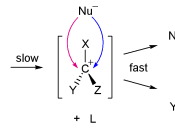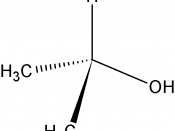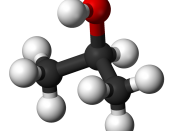Copper CatalystA catalyst is a substance that generally increases the rate of a chemical reaction without itself being consumed in the process. They are used in the production of virtually all industrial chemicals, including the preparation of acetone from isopropyl alcohol (common name for isopropanol). This reaction involves the presence of a catalyst known as a copper catalyst. Oxidation or dehydrogenation over a copper catalyst converts the isopropyl alcohol into acetone, through the following reaction (chemical system).
(CH3)2CH-OH â (CH3)2C=O + H2orCH3CHOHCH3 â CH3COCH3 + H2However, the reactions above only explain part of the production process of acetone. The primary technique of acetone production begins by using propylene (C3H6) that was obtained through the cracking of petroleum (or crude oil àa naturally occurring, flammable liquid found in rock formations in the Earth consisting of a complex mixture of hydrocarbons of various molecular weights, plus other organic compounds), and combining it with sulphuric acid (H2SO4), to yield isopropyl hydrogen sulphate, which upon hydrolysis produces isopropyl alcohol (C3H8O).
The copper catalyst in this reaction is a type of metal catalyst and is also classified as under the category of heterogeneous catalysts. A heterogeneous catalyst is a catalyst in a reaction in which the reactants and the catalyst are in different physically states. Typically the catalyst is a solid, and the reactants and products are in gaseous or liquid states. In this case, the copper catalyst is in a solid state, as oppose to a vapour-phase or gaseous state conversion of the secondary alcohol (isopropyl alcohol) into a ketone (acetone). As illustrated from the above reaction, the copper catalyst is combined with heat (at 300ÃÂC or 570ÃÂF), and together it reacts with the isopropyl alcohol (C3H8O).This therefore, creates the intermediate step, which is followed by the formation of...


